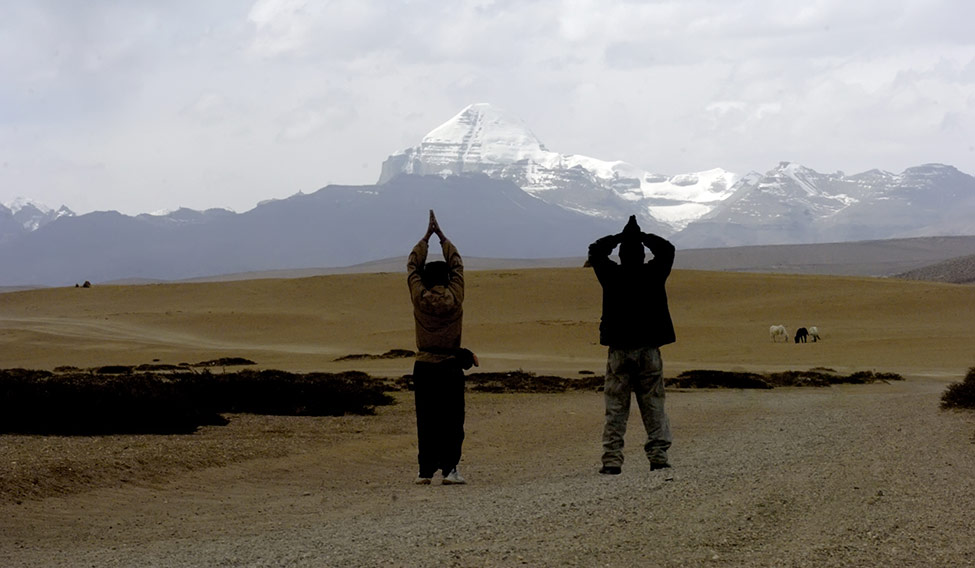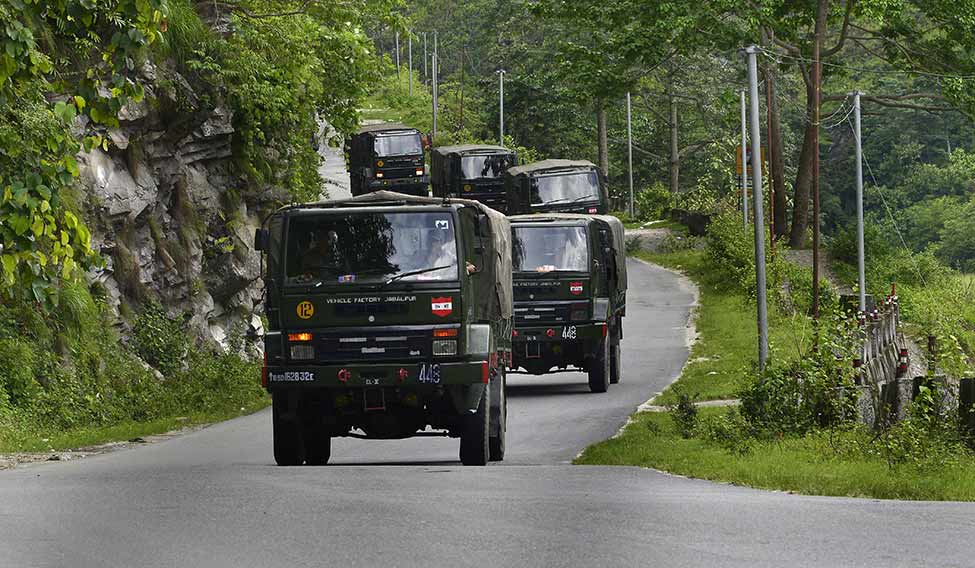The Doklam (Doko La) plateau lies between the two Silk Road entry points from China to India, the Nathu La and Jelep La, near the India-Bhutan border in Sikkim. Located in the Chumbi valley and claimed by Bhutan, it has been just a grassland frequented by wild yaks and cattle herders from Tibet and Bhutan. At least, till early last month.
Now, with China’s ongoing attempts to construct a paved road, which can carry vehicles up to 50 tonnes, this grazing patch is turning into a dagger pointed at the Siliguri corridor, also known as ‘Chicken’s Neck’. Once the construction of the road is complete, India believes China will be in a position to overrun the Siliguri corridor, cutting off the northeastern states from the rest of India.
From Siliguri and the adjacent New Jalpaiguri in West Bengal, the movement of Army vehicles and personnel is a routine sight. Of late, the rush has intensified. On June 30, even as a large number of people took out a protest march in Siliguri against a separate Gorkhaland, blocking all traffic, Army convoys could be seen rolling out silently across the Mahananda bridge, headed for the hills further up.
According to government sources, the trigger behind the latest outbreak of hostilities was the Indian Army’s intervention on June 4 to stop the road construction by the Chinese army in an area claimed by Bhutan. [A statement issued by the ministry of external affairs, however, noted that the construction party entered the Doklam area on June 16.] India responded on a request from Bhutan following its commitments under the 2007 Friendship Treaty. In retaliation, the PLA destroyed two Indian Army bunkers. As tension mounted, senior military officers from both sides held a flag meeting at the Nathu La border post on June 20, in which China asked India to remove its troops from the Doklam plateau, which it claimed was Chinese territory.
All subsequent requests from India for another flag meeting were rejected by China, according to an Indian Army brigadier from the eastern command. He said if China was allowed to complete the road, it could effectively cut off supply chains to the Army and Air Force divisions stationed in the region.
The Bhutan foreign ministry said the construction of the road inside Bhutanese territory was a direct violation of the agreements it had with China. But China claimed that Indian troops illegally crossed into China. “We once again urge the Indian side to abide by the existing boundary convention, respect China’s territorial sovereignty, and immediately bring the border troops that have crossed into China back to the Indian side...,” said Lu Kang, spokesperson for the Chinese foreign ministry. He said Doklam had been a part of China since ancient times and its activities were “acts of sovereignty in its own territory.” Writing for THE WEEK, former chief of Army staff General (retd) Bikram Singh clarified that “as per the Indian and Bhutanese claims, the tri-junction is near Batang La. However, the Chinese claims show it further south at Mount Gipmochi.”
The only non-disputed border between India and China is the Sikkim sector, which is based on the Anglo-Chinese treaty (1890). The treaty, however, puts Mount Gipmochi at the tri-junction of China, India and Bhutan, which supports the Chinese claims on Doklam. China also says from the time of the Quing dynasty (1644 to 1912), Tibetans owned the Doklam grasslands and Bhutanese shepherds paid grass tax to access the region. India and Bhutan say the treaty was concluded before Bhutan became a British protectorate (1910). Sino-Bhutanese boundary talks are going on and India and Bhutan wants status quo to be maintained till they are concluded.
China seems to be testing India’s resolve on supporting Bhutan, taking advantage of the confusion on the exact location of the Doklam plateau. China’s decision to suspend the Kailash-Manasarovar yatra through the Nathu La route has been another provocation. Reports about the Chinese military conducting trials of a 35-tonne light weight battle tank in Tibet near the Indian border have added to the tension.
 Acts of faith: File picture of pilgrims worshipping Mount Kailash during a parikrama between Lake Manasarovar and Mount Kailash | B. Jayachandran
Acts of faith: File picture of pilgrims worshipping Mount Kailash during a parikrama between Lake Manasarovar and Mount Kailash | B. Jayachandran
In Gangtok, most tourists have left, bringing this year’s tourist season to an early close. “The China incident and the Gorkhaland agitation in West Bengal have caused mass cancellations by tourists,” said a hotelier. Vehicles carrying tourists to the Nathu La border post and Tsongmo Lake have come down from nearly 1,500 a day to 200.
“The Army has stopped issuing passes to vehicles and is allowing only 80 vehicles a day to carry tourists to Nathu La from Tsongmo,” said Nitin Bhattarai, a Gangtok-based taxi operator. And, journalists are not permitted to enter Nathu La. We managed to reach Nathu La disguised as tourists, but were prevented by the Army from taking photographs. Tourists were advised to not even point at Chinese army personnel standing watch across the border. From their high altitude observation posts, PLA personnel were seen taking photographs of the Indian side, including the movement of tourists and vehicles. “They are building newer and higher observation posts and also a ropeway to transport goods and construction material faster,” said a major belonging to the Dogra Regiment.
While on the Indian side of the border there are many settlements and Gangtok is just 56km away, on the Chinese side, the nearest town is Yadong in Tibet, about 500km from the border post. All visitors to Nathu La are stopped by the Army from venturing further close to Doklam. “The road beyond here, is closed,” was the refrain, despite our repeated requests for going ahead.
The Union government seems to be downplaying the issue. The ministry of defence and the Army headquarters have been asked to keep quiet and the ministry of external affairs is doing all the talking. The foreign office, however, devoted only a third of its regular briefing time last week for the incident.
“Earlier we would exchange a bottle of brandy, Hindi music CDs or a pack of cigarettes with them,” said a soldier posted in Nathu La. “Since last month, soldiers on both sides have been strictly instructed to not interact.” Interaction between ordinary people, however, has not stopped.
Till June 30, the China market at Sherathang on the Indian side and the India market at Renqinggang in Tibet remained operational, despite the prevailing tensions. The Nathu La trade route was opened in 2006 and, at present, goods worth 065 crore are being traded through this border annually. “Tibetan as well as Chinese traders continue to bring their trucks to Sherathang. We are also going to Tibet to trade. There are no problems as yet but the number of traders visiting the other side has surely dropped lately. I have not visited the other side after the recent incidents,” said Mimi Dorji Bhutia, a mother of two, who runs a shop near Sherathang.
Bhutia said she had enough stocks left before she would need to visit Tibet for fresh purchase. “I will wait it out till the tension clears,” she said. Edible oil, rice, grains and cycles top the list of 44 Indian items allowed for trade through Nathu La. From the Chinese side, animals like horses, yaks and sheep are allowed. Other popular items include animal skin, wool, raw silk, China clay, yak butter and salt.
Indo Tibetan Border Police personnel at Nathu La said they continued to escort Chinese vehicles on designated trade days. “We keep a close watch and all trading activity in the Sherathang China market are conducted under CCTV surveillance. Nothing has changed in that sense for us,” said Dinesh Yadav, commandant of the 48th division of ITBP.
At Sherathang and Nathu La, the majestic white-painted acclimatisation centres constructed by the Indian government for Kailash-Manasarovar pilgrims presented a desolate picture. They stand unlocked, deserted and unattended. The one at Sherathang bore a lone banner welcoming pilgrims for the yatra via Nathu La, which has been suspended by China. Two batches of pilgrims were sent back from the acclimatisation centres a few days ago.
Attempting to reach Doklam from the other side near the Jelep La, we reached the border village of Gnathang, situated around 19 kilometres from Doklam. Only Army vehicles are allowed on the steep single lane road to Doklam. Army camps on the way appeared desolate, with just about a handful of men left behind to carry out guard duties. All Army units responsible for the region have been asked to take positions in and around Doklam.
The Army is seeking the help of the local people in Gnathang, who are engaged as porters and construction workers. “Nineteen youth have already been taken to Doklam by the Army,” said Prakash Gurung, who runs a homestay. “I am planning to leave with my family and go down to Gangtok. There is simply no business or freedom here and there is a sense of constant fear.”
Diya Chhetri, another Gnathang resident, said as the standoff worsened in Doklam, Army personnel asked the villagers to keep their valuables and important documents ready before going to sleep every night. “We still continue to do so as there is no guarantee when we might have to leave our homes,” said Chhetri, who is a journalism student at Namchi College in South Sikkim district.
A 25-year-old construction worker said the Army was looking for help to construct two new bunkers in two days to replace the destroyed ones. “I am leaving on an Army truck tomorrow morning,” he said. “Our brief is to construct new bunkers.” He refused to give his name as he wanted to remain in the Army’s good books.
Asked about the risk to their lives from Chinese aggression while constructing the bunkers, he said there had been no deaths from enemy firing on this border, echoing the comments made by Prime Minister Narendra Modi last month at the St Petersburg Economic Forum in Russia. Modi had said that in the last 40 years, not a single bullet had been fired along the Sino-Indian border because of border disputes.
The prime minister is scheduled to meet Chinese President Xi Jinping on July 7 at Hamburg for the G20 summit. Hopefully, the meeting will ensure that guns continue to remain silent on the Sino-Indian border.







